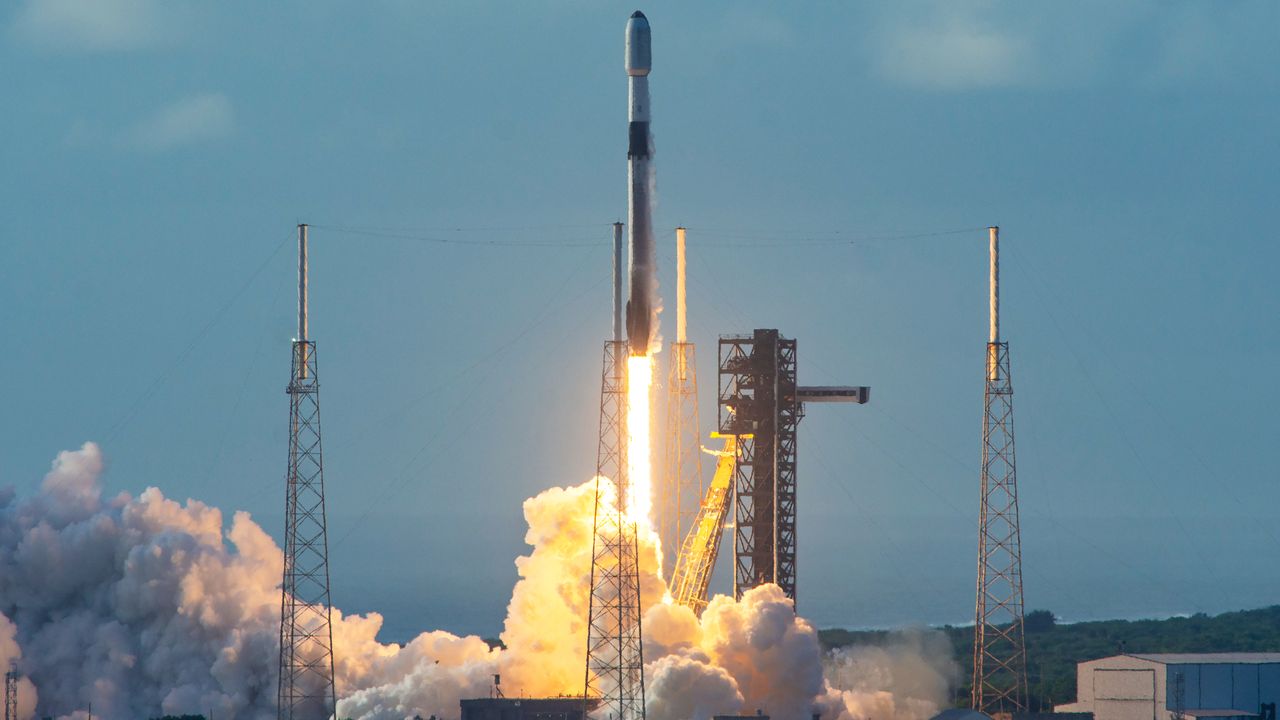SpaceX is set to achieve two major milestones with a single Falcon 9 launch today, October 19, and you can watch the action live. The Falcon 9 rocket is scheduled to launch 28 of SpaceX’s Starlink broadband satellites from Cape Canaveral Space Force Station in Florida. The launch window opens at 10:52 a.m. EDT (14:52 GMT) and will last for four hours.
To date, SpaceX has launched 9,988 Starlink satellites, according to astrophysicist and satellite tracker Jonathan McDowell. With today’s launch, that number will surpass the 10,000 mark, a significant milestone for the company’s ambitious satellite internet constellation.
In addition, this launch will mark the record-breaking 31st liftoff for the Falcon 9’s first-stage booster, designated Booster 1067. This level of rocket reuse is a testament to SpaceX’s innovative approach to making spaceflight more cost-effective and efficient.
SpaceX’s journey with Starlink began in February 2018 with the launch of the first two prototype satellites to low Earth orbit (LEO). Fifteen months later, the company started building the megaconstellation in earnest. The public beta test for Starlink service launched in October 2020, followed by a commercial rollout in 2021.
Today, Starlink provides internet service to millions of customers worldwide, and SpaceX continues to expand the network by regularly deploying new satellites. The pace of launches has been extraordinary in recent months — SpaceX has launched 89 Starlink missions in 2024 alone, already surpassing that number this year.
Looking ahead, SpaceX has permission to deploy up to 12,000 Starlink satellites, with plans that could see the constellation grow to more than 30,000 spacecraft, making it the largest satellite internet network ever constructed.
Out of the 9,988 satellites launched so far, most remain active, with 8,610 currently operational according to McDowell. The rest have been deorbited and are intentionally brought down to burn up in Earth’s atmosphere. Each Starlink satellite has an operational lifespan of about five years.
If everything goes according to plan today, Booster 1067 will return to Earth approximately 8.5 minutes after liftoff and land on SpaceX’s autonomous drone ship, “A Shortfall of Gravitas,” stationed in the Atlantic Ocean. This will mark the booster’s 31st successful launch and landing.
The ability to reuse rockets extensively is central to SpaceX’s strategy for reducing costs and increasing the sustainability of space missions. Building on this success, SpaceX is also developing Starship, a giant fully reusable rocket designed to enable human settlement on Mars. It is important to note that while the Falcon 9 and its close relative Falcon Heavy have reusable first stages, their upper stages remain expendable.
For today’s mission, the Falcon 9’s upper stage will carry the 28 Starlink satellites to low Earth orbit and deploy them approximately 64 minutes after launch.
Stay tuned and enjoy the live coverage of this exciting launch as SpaceX continues to push the boundaries of space technology and connectivity.
https://www.space.com/space-exploration/launches-spacecraft/spacex-falcon-9-31st-flight-rocket-reuse-record-starlink-launch
